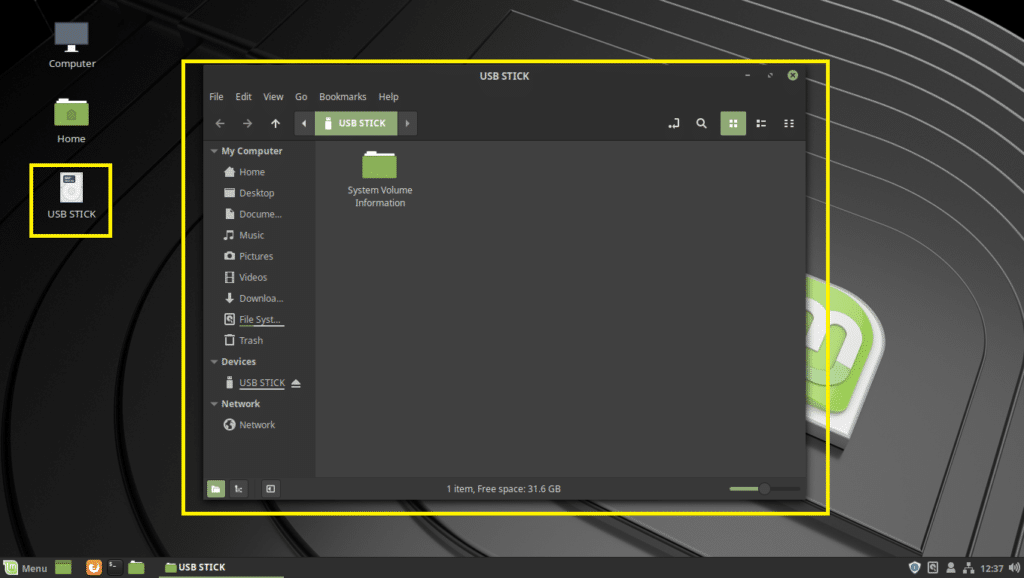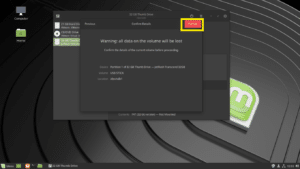

TIMESHIFT USB BACKUP FULL
The root version runs with root permissions, which are required to access system folders and files (i.e., do a full backup of your OS). The program installs two shortcuts under the Archiving menu (in the PCLinuxOS LXQt Community Release): Back In Time and Back In Time (root). rw-rw-r- 1 david david 1402 Jun 15 12:23 mesa-iris-test-dell-laptop.txtīefore starting BiT, plug in your external drive (whether USB flash drive, HD or SSD):

Then I issued the $ ls -l command to check the file's owner and show read/write permissions. # chown david:david -R /media/770841ba(.)5ea03Īs a final test, I tried copying a small text file from my /home folder to the USB flash drive this operation was successful. I also used GParted to set a name for the USB backup partition ("Backup") following these steps:Īfter plugging the flash drive into a USB port and mounting the drive, I ran the chown command from the Terminal, to set the user and group ownership to myself (username david). "How to Format USB Drives and SD Cards on Linux." Linuxize 7 Jan. If you would like some guidance, this brief article provides instructions: With GParted, I wiped the flash drive by creating a gpt partition table and a single, large partition formatted as ext4

However, Back In Time recommends the use of a reliable, Linux-friendly file system such as ext4. The USB flash drive came formatted with the FAT32 file system by default. I decided that a 16 GB USB flash drive should suffice for my backup medium, and that I would designate it exclusively for this machine. This laptop is primarily used for Web browsing and word processing, so it does not have a lot of data stored on it. Prepare a USB Flash Drive as Backup Storage Medium (Optional) Although it is possible to run BiT exclusively from the command line, I suspect that most users would be more comfortable with the GUI version.
TIMESHIFT USB BACKUP INSTALL
The first step is to install these two packages from the PCLinuxOS repositories: However, if you have separate backups for your OS and your personal files, you can just have Timeshift revert to a previous working state without affecting your current documents. If you use a single solution such as Timeshift, then when you need to restore your system (after a borked upgrade, for example), Timeshift will also overwrite your documents to a previous / earlier state - something you definitely do not want. "Why do I need two different backup applications? Can't I just use Timeshift for everything?" My simple backup strategy for this Dell laptop is to use Timeshift to take care of the operating system files (i.e., everything except for my /home folder), and Back In Time for my personal data (i.e., documents, pictures, music, videos). Configuration can be done entirely via the GUI only three requirements for BiT must be specified: where to save snapshots which folders to back up and when to perform the backup. The beauty of Back In Time is that although it is highly customizable (as we will discuss shortly), it is also suited for people who want a simple program for backing up their data. BiT is based on the classic rsync CLI utility it is written in Python and comes with a Qt5 GUI which will run on both KDE and GTK-based desktop environments. 1 BiT was inspired by the now discontinued FlyBack project, which was a backup utility modeled loosely on macOS's Time Machine. BiT was written by a team of developers including Dan Oprea, Bart de Koning, Richard Bailey, Taylor Raack and Germar Reitze. I hope that my article will help you get started with BiT and encourage you to explore its flexible yet powerful features.īack In Time is a mature application, originally released in 2008 it is supported on all major Linux distributions. Since I did not have a backup solution in place for our old - but trusty - Dell Latitude E4300 laptop (used as a secondary computer), I installed Back In Time to learn more about it. After a bit of searching, I found that the Timeshift developers also rate BiT as an excellent tool. I recently saw in the PCLinuxOS forum that Texstar recommended Back In Time as a backup application for your personal files. Back In Time: Getting Started with Linux's Time Machineĭuring the pandemic, I have become more conscientious about my backup regime on our two desktop PCs I use the combination of Timeshift (for system files) and Grsync (for documents and personal files).


 0 kommentar(er)
0 kommentar(er)
